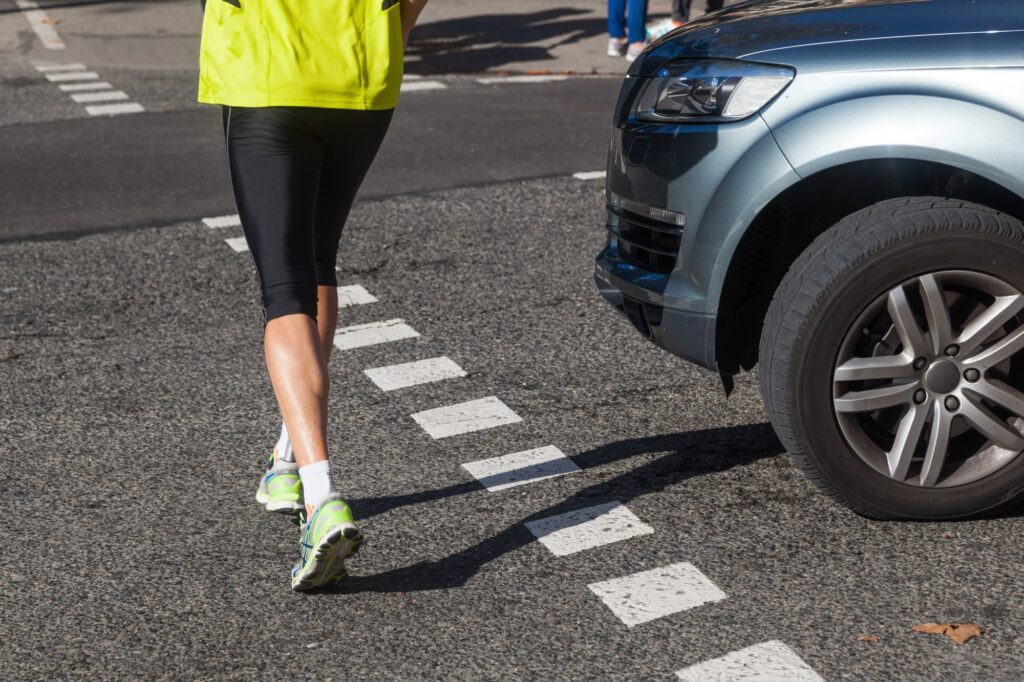As our Raleigh, NC pedestrian accident lawyer can confirm, pedestrian accidents often lead to serious injuries and costly medical bills. If you are struck by a vehicle while walking, you may assume the driver is always 100% responsible. However, the legal system sometimes views these accidents differently. In many states, the concept of comparative fault determines how much compensation you can receive if you are found partly at fault for the incident. Understanding how comparative fault works is essential to protecting your rights and preparing a strong claim.
What Is Comparative Fault?
Comparative fault—sometimes called comparative negligence—is a legal rule that allocates responsibility for an accident between all parties involved. Rather than placing all the blame on one side, a court or insurance company examines the actions of both the driver and the pedestrian to decide how much each contributed to the accident.
For example, if a pedestrian was crossing the street outside of a crosswalk or against a traffic signal, they may be considered partially responsible for the collision. At the same time, the driver might have been speeding or distracted. Comparative fault ensures that each party’s share of responsibility is factored into the final settlement or judgment.
Different Types Of Comparative Fault
States follow different rules when applying comparative fault:
- Pure Comparative Fault: In states with a pure system, you can recover damages even if you were mostly at fault—up to 99%. Your compensation is simply reduced by your percentage of fault. For example, if your total damages are $100,000 but you are found 40% at fault, you could still recover $60,000.
- Modified Comparative Fault: Most states follow this model. You can recover damages only if you are less than a specific threshold of fault—commonly 50% or 51%. If your responsibility exceeds that threshold, you cannot collect any compensation.
- Contributory Negligence: A few states use this much stricter rule. If you are even 1% at fault, you cannot recover any damages.
Knowing which rule applies in your state is critical, as it can dramatically affect the outcome of your claim.
How Fault Is Determined In Pedestrian Accidents
Insurance adjusters, lawyers, and sometimes a jury will examine evidence to assign percentages of fault. They may review:
- Traffic laws—Was the pedestrian in a crosswalk? Did the driver fail to yield?
- Police reports—Officers often document witness statements and accident details.
- Video footage or photos—Traffic cameras and cell phone videos can be pivotal.
- Expert testimony—Accident reconstruction experts can help establish what happened.
Both the driver’s and pedestrian’s actions before the collision are carefully analyzed.
Why Legal Representation Matters
Because comparative fault can reduce or even eliminate compensation, having our experienced pedestrian accident lawyer is essential. Our lawyer can:
- Gather and preserve evidence to demonstrate the driver’s negligence.
- Challenge unfair fault assignments from insurance companies.
- Negotiate for the highest possible settlement based on the facts of the case.
Without legal guidance, you risk accepting a settlement that undervalues your claim or being unfairly blamed for the accident.
Protecting Your Rights
If you’ve been injured as a pedestrian, don’t assume the law automatically sides with you. Comparative fault means that your actions before the accident—whether you were distracted, jaywalking, or crossing against the light—can affect your compensation. Promptly consulting our skilled pedestrian accident lawyer helps ensure that the driver’s negligence is fully documented and your financial recovery is maximized. At Burton Law Firm, we are here to help you.
